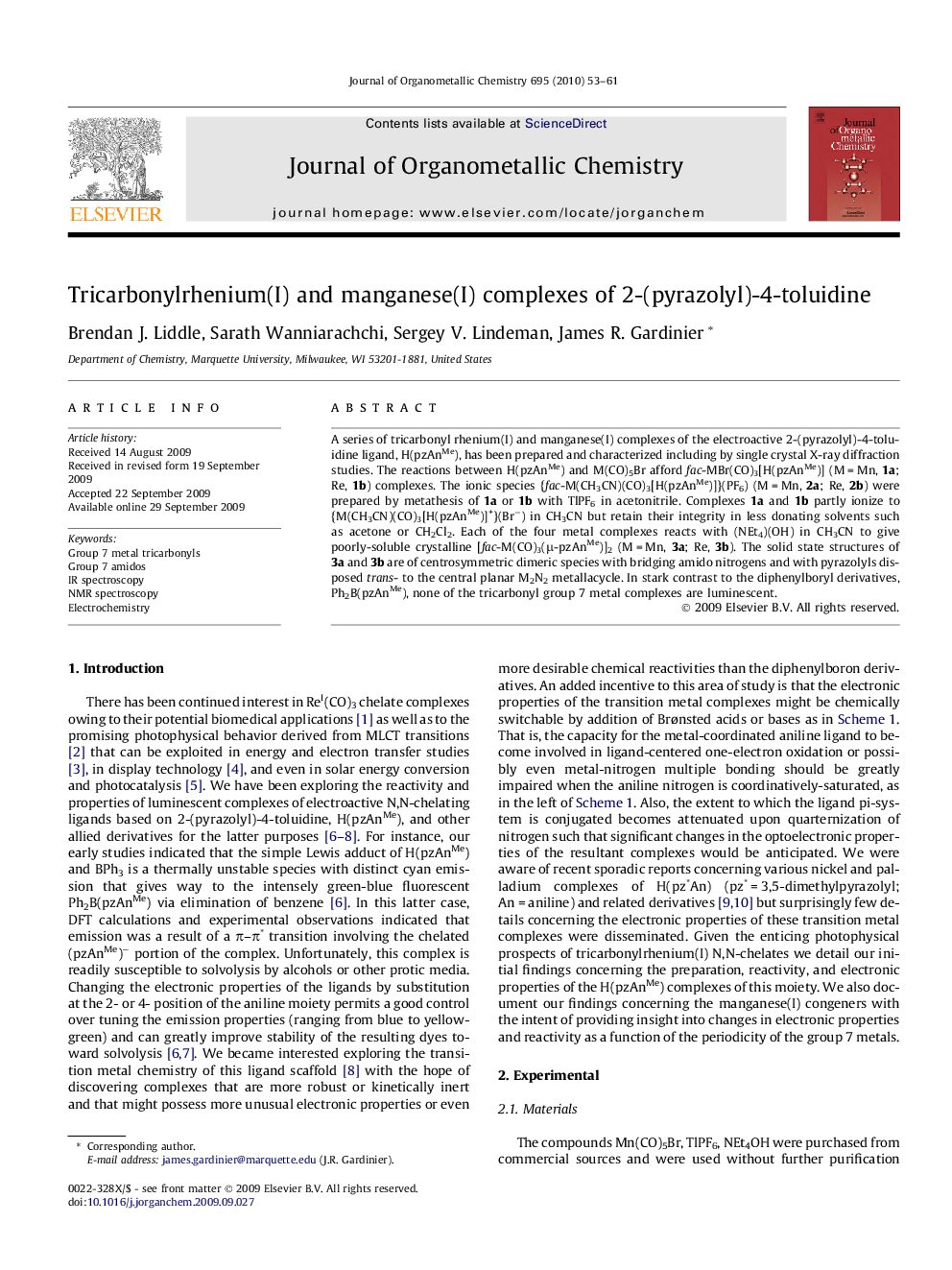| Article ID | Journal | Published Year | Pages | File Type |
|---|---|---|---|---|
| 1327114 | Journal of Organometallic Chemistry | 2010 | 9 Pages |
A series of tricarbonyl rhenium(I) and manganese(I) complexes of the electroactive 2-(pyrazolyl)-4-toluidine ligand, H(pzAnMe), has been prepared and characterized including by single crystal X-ray diffraction studies. The reactions between H(pzAnMe) and M(CO)5Br afford fac-MBr(CO)3[H(pzAnMe)] (M = Mn, 1a; Re, 1b) complexes. The ionic species {fac-M(CH3CN)(CO)3[H(pzAnMe)]}(PF6) (M = Mn, 2a; Re, 2b) were prepared by metathesis of 1a or 1b with TlPF6 in acetonitrile. Complexes 1a and 1b partly ionize to {M(CH3CN)(CO)3[H(pzAnMe)]+}(Br−) in CH3CN but retain their integrity in less donating solvents such as acetone or CH2Cl2. Each of the four metal complexes reacts with (NEt4)(OH) in CH3CN to give poorly-soluble crystalline [fac-M(CO)3(μ-pzAnMe)]2 (M = Mn, 3a; Re, 3b). The solid state structures of 3a and 3b are of centrosymmetric dimeric species with bridging amido nitrogens and with pyrazolyls disposed trans- to the central planar M2N2 metallacycle. In stark contrast to the diphenylboryl derivatives, Ph2B(pzAnMe), none of the tricarbonyl group 7 metal complexes are luminescent.
Graphical abstractTricarbonyl group 7 metal complexes of the electroactive N,N-chelating 2-(pyrazolyl)-4-toluidine ligand, H(pzAnMe), have been prepared and characterized in solution and in the solid state in an effort to ascertain whether switching behavior could be mediated by Brønsted acids and bases. The electronic properties and periodic trends are discussed.Figure optionsDownload full-size imageDownload as PowerPoint slide
